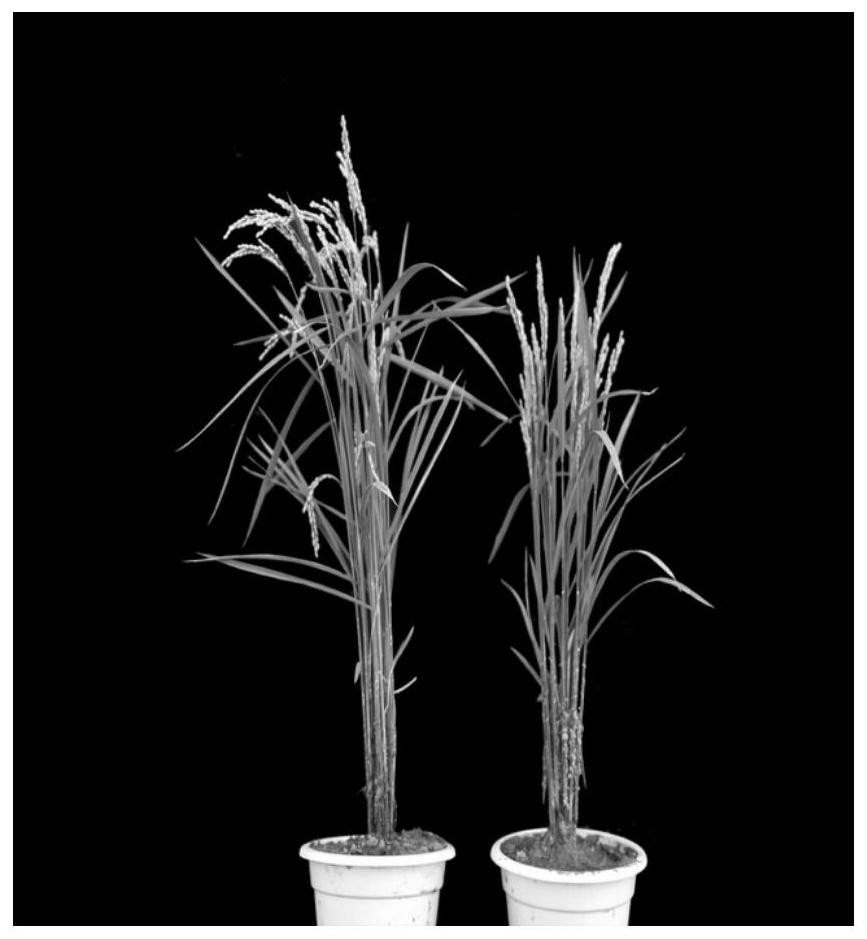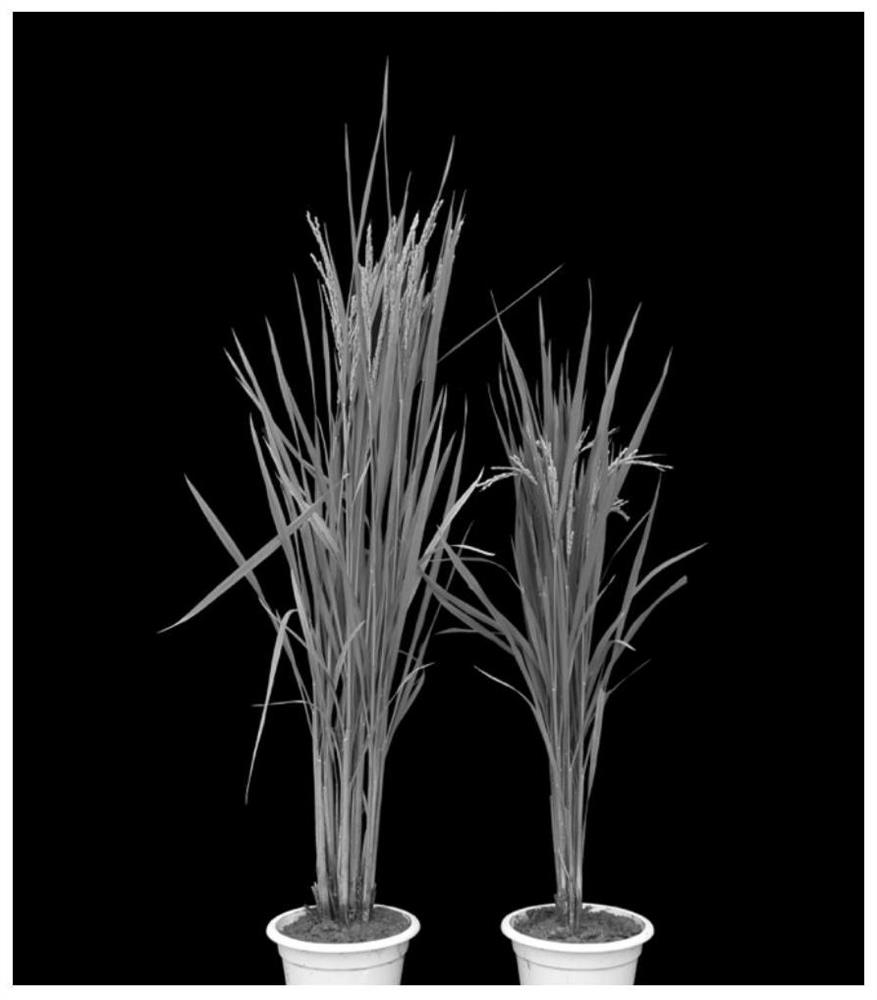The system and application of modifying oshph gene to obtain dwarf rice by using crispr-cas system
A technology of rice and gene editing, applied in the fields of application, genetic engineering, plant genetic improvement, etc., can solve the problems of decreased resistance to diseases and insect pests of varieties, single genetic background of rice varieties, high plant height, etc.
- Summary
- Abstract
- Description
- Claims
- Application Information
AI Technical Summary
Problems solved by technology
Method used
Image
Examples
Embodiment 1
[0054] Embodiment 1, the vector construction of CRISPR / Cas9 of the coding gene OsHPH of rice control plant height-related protein OsHPH
[0055] 1. Acquisition of OsHPH gene
[0056] Using the genomic DNA of rice Kitaake (Oryza sativa var. Kitaake) as a template, PCR amplification was performed with the following primers primer1 and primer2 to obtain the target gene. The underlined part is the linker for In-Fusion enzyme ligation.
[0057] Primer1: 5'- ATCCTCTAGAGTCGAC ATGGTGGCCGAGCACCCCACGC-3';
[0058] primer2: 5'- ATCCTCTAGAGTCGAC TCAGCTGGCCGCCTCGAC-3'.
[0059] After recovering and purifying the PCR product, it was connected to the B-zero (purchased from Beijing Quanshijin Company) sequencing vector, transformed into DH5α competent cells, and the positive clones were selected for sequencing.
[0060] Sequencing results showed that the length of the amplified PCR product was 1.1 Kb, the sequence was the nucleotide sequence shown in SEQ ID No.3, and it was named OsHPH g...
Embodiment 2
[0069] Example 2, Cultivation of OsHPH gene edited transgenic plant Kitaake and its identification
[0070] 1. Breeding transgenic plants with edited OsHPH gene
[0071] CRISPR / Cas9-gRNA1 was mediated by Agrobacterium tumefaciens EHA105 to transform Kitaake japonica rice, the specific method is as follows:
[0072] 1. The recombinant vector CRISPR / Cas9-gRNA1 obtained in Example 1 was introduced into Agrobacterium tumefaciens EHA105 by heat shock method to obtain recombinant Agrobacterium tumefaciens EHA105 containing the recombinant vector CRISPR / Cas9-gRNA1. The recombinant Agrobacterium tumefaciens EHA105 containing the recombinant vector CRISPR / Cas9-gRNA1 was cultured at 28°C for 16 hours, and the cells were collected. The bacterium was diluted with N6 liquid medium (Sigma, catalog number C1416) containing 100 μM acetosyringone to obtain the diluted bacterial solution, and the OD of the diluted bacterial solution was 600 ≈0.5.
[0073] 2. Mix and infect the mature embryog...
Embodiment 3
[0081] Example 3. Breeding transgenic plants Nipponbare (Nip), Zhongzuo 1022 (1022), Zhongzuo 9017 (9017), Dongjing (DJ), Zhonghua 11 (ZH11), Dianjingyou (DJY) with edited OsHPH gene
[0082] Using the same method as in Example 2, the transgenic plants Nipponbare (Nip), Zhongzuo 1022 (1022), Zhongzuo 9017 (9017), Dongjing (DJ), Zhonghua 11 (ZH11), Yunnan For the results of Japonica Excellent (DJY), see Figure 2-8 As shown, the phenotype of reduced plant height can also be achieved in these varieties, which also fully demonstrates that OsHPH is a gene that regulates plant height in rice.
PUM
 Login to View More
Login to View More Abstract
Description
Claims
Application Information
 Login to View More
Login to View More - R&D
- Intellectual Property
- Life Sciences
- Materials
- Tech Scout
- Unparalleled Data Quality
- Higher Quality Content
- 60% Fewer Hallucinations
Browse by: Latest US Patents, China's latest patents, Technical Efficacy Thesaurus, Application Domain, Technology Topic, Popular Technical Reports.
© 2025 PatSnap. All rights reserved.Legal|Privacy policy|Modern Slavery Act Transparency Statement|Sitemap|About US| Contact US: help@patsnap.com



